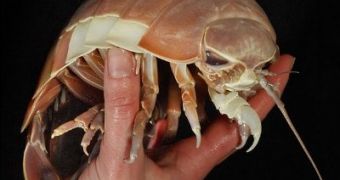A giant isopod at Toba Aquarium in Mie Prefecture, Japan was found dead on Friday, according to aquarium officials. The crustacean from the Bathynomus giganteus family, dubbed No.1, was the first of nine giant isopods kept by the Japanese aquarium and was renowned for his five-year hunger strike.
The 12 inch (30 cm) sea crustacean arrived at the Toba Aquarium in 2007 and its last meal was on January 2, 2009 when it ate a 50g morsel of horse mackerel, according to the Daily Mail.
Its apparently unjustified refusal to eat baffled the aquarium staff and made the giant isopod very popular on the Internet.
On Friday, at around 5PM, Takeya Moritaki, the creature's keeper, went to give No.1 kibinago (silver-stripe round herrings) but observed that it wasn't moving or reacting in any way. The death was later confirmed by the officials of the aquarium.
“It’s sad that we were unable to feed it. I’m grateful to have had it, since it helped to create an opportunity to bring giant isopods into the spotlight,” said Moritaki.
Members of the aquarium personnel say the crustacean used to pretend to eat, as it would poke at the food with its mouth and front legs, but never actually ingested the food. They add that the other isopods at the aquarium have healthy appetites.
The giant isopods are crustaceans related to the shrimp and crabs, and they are known to be living in the waters of the Atlantic, Pacific and Indian Oceans.
Experts at the aquarium performed a dissection on the dead animal but they didn't find any obvious cause of death. They said that the creature would be frozen for preservation.
The giant isopod's 1,869-day hunger strike is probably the longest recorded period of time that an animal has gone without any type of nutrition.
Researchers kicked off an investigation to try and find out why No.1 stopped eating and to discover more about this species.

 14 DAY TRIAL //
14 DAY TRIAL //